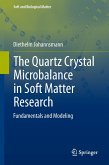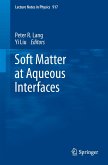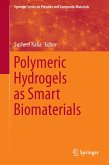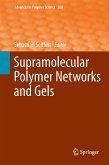This book describes the physics of the second-generation quartz crystal microbalance (QCM), a fundamental method of analysis for soft matter at interfaces.
From a device for measuring film thickness in vacuum, the quartz crystal microbalance (QCM) has in the past two decades evolved into a versatile instrument for analyzing soft matter at solid/liquid and solid/gas interfaces that found applications in diverse fields including the life sciences, material science, polymer research and electrochemistry. As a consequence of this success, the QCM is now being used by scientists with a wide variety of backgrounds to study an impressive diversity of samples, with intricate data analysis methods being elaborated along the way. It is for these practitioners of the QCM that the book is written. It brings across basic principles behind the technique and the data analysis methods in sufficient detail to be educational and in a format that is accessible to anyone with an undergraduate level knowledge of any of the physical or natural sciences. These principles concern the analysis of acoustic shear waves and build on a number of fundamental physical concepts which many users of the technique do not usually come across. They have counterparts in optical spectroscopy, electrical engineering, quantum mechanics, rheology and mechanics, making this book a useful educational resource beyond the QCM itself. The main focus is the physics of QCM, but as the book describes the behavior of the QCM when exposed to films, droplets, polymer brushes, particles, vesicles, nanobubbles and stick-slip, it also offers insight into the behavior of soft matter at interfaces in a more general sense.
From a device for measuring film thickness in vacuum, the quartz crystal microbalance (QCM) has in the past two decades evolved into a versatile instrument for analyzing soft matter at solid/liquid and solid/gas interfaces that found applications in diverse fields including the life sciences, material science, polymer research and electrochemistry. As a consequence of this success, the QCM is now being used by scientists with a wide variety of backgrounds to study an impressive diversity of samples, with intricate data analysis methods being elaborated along the way. It is for these practitioners of the QCM that the book is written. It brings across basic principles behind the technique and the data analysis methods in sufficient detail to be educational and in a format that is accessible to anyone with an undergraduate level knowledge of any of the physical or natural sciences. These principles concern the analysis of acoustic shear waves and build on a number of fundamental physical concepts which many users of the technique do not usually come across. They have counterparts in optical spectroscopy, electrical engineering, quantum mechanics, rheology and mechanics, making this book a useful educational resource beyond the QCM itself. The main focus is the physics of QCM, but as the book describes the behavior of the QCM when exposed to films, droplets, polymer brushes, particles, vesicles, nanobubbles and stick-slip, it also offers insight into the behavior of soft matter at interfaces in a more general sense.








